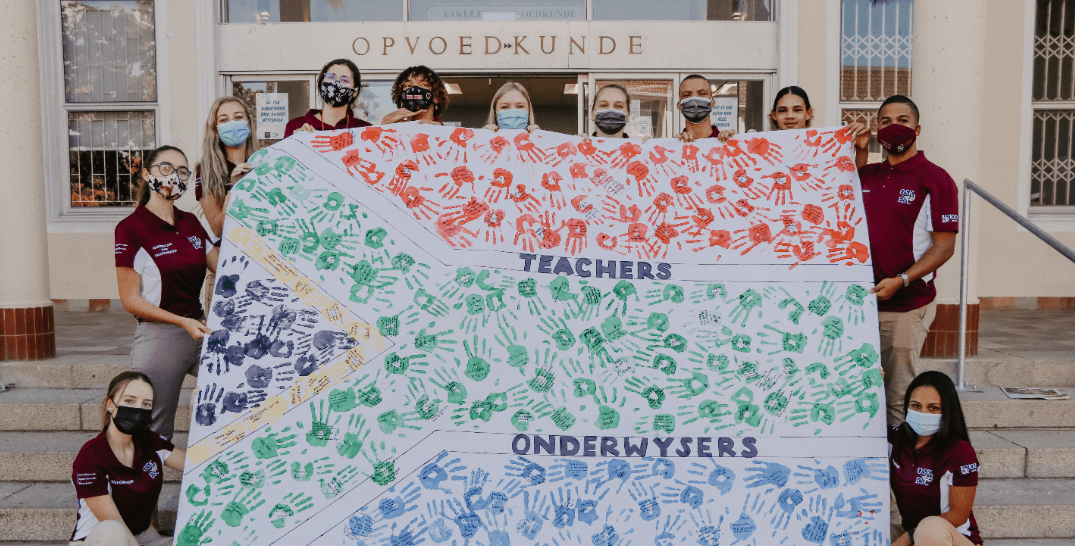The Challenge
With several decades of teaching experience under her belt, Chrischar Rock has encountered significant challenges. In her current role as a lecturer in practical learning at Stellenbosch University, Dr. Rock is responsible for both educating future teachers in the classroom context as well as coordinating and supervising their practical placements across diverse South African schooling contexts. The motivation behind these school practicums is for pre-service teachers to enjoy hands-on experience in the classroom, implementing theory and teaching pedagogy into the classroom while being supported by mentor teachers.
However, this academic year, Chrischar’s responsibility was to coordinate, support, and manage nearly 1,000 odd pre-service teachers across a plethora of different schools, making it incredibly difficult for her to keep up and provide every student with the attention they required and deserved.
Every day, she’d be flooded with emails from students struggling with issues ranging from difficult classroom situations and academic queries to a lack of support from mentor teachers. But, as much as she wanted to provide every student with meaningful support and responses, she simply didn’t have the time.
In addition, Dr. Rock found that each student had a unique experience during their practicum, and as a result of that, it was incredibly difficult for her to properly capture and understand exactly what was happening on the ground during large post-practicum discussions
Ultimately, she found that she was in need of a way to provide all her students with more personalised feedback while encouraging them to use their reflective practice tools more deeply during their school-based experiences.
Enhancing Self-Reflexivity and Improving Understanding of Pre-Service Teachers’ Practicum Experiences with Mindjoy
To help manage the challenges of supporting such a large group of pre-service teachers, Dr. Chrischar Rock integrated Mindjoy into her practicum module as a digital space for guided reflection and formative learning. Through the platform, students could engage with interactive AI tutors that prompted them to think through classroom situations, reflect on their teaching practice, and explore strategies for challenges like classroom management or differentiated and contextualised lesson planning.
These tutors were available at any time, allowing students to seek support and reflect both during and after school hours, something that either wasn’t possible through traditional communication, nor was it effective via email.
Chrischar also used the platform to align reflective prompts with her course outcomes, ensuring that students were connecting their real-world experiences to key teaching, learning and assessment principles.
By means of Mindjoy’s insights tool, Dr. Rock was able to glean a great deal of valuable information from students’ reflections, giving her new insights into common concerns, patterns in student reflective learning, and the evolving realities of classroom life across different school contexts.
The Impact
Using Mindjoy had a significant impact on both Dr. Chrischar Rock and her students. For Chrischar, one of the most immediate benefits was a drastic reduction in the volume of routine questions and concerns flooding her inbox. Chrischar could tell that students weren’t simply not asking questions - rather, they were asking more questions by means of the AI tutor and they were doing so at all hours. This indicated to her that not only would they have been able to receive prompt answers, reducing the bottleneck and obstacles in the learning process, but they were also able to ask questions at any time of day (and they were!).
Chrischar found that students began turning to the AI tutors for everyday issues - they asked questions about classroom management, lesson planning, and procedural concerns - seeking instant guidance instead of emailing her. This shift freed her time and mental bandwidth, allowing her to focus on deeper teaching and mentorship rather than being overwhelmed by minor queries. This also seemed to indicate that there may have been more students asking questions than before as the process was both quicker and easier.
At the same time, Mindjoy provided a window into students’ practicum experiences like never before. The platform captured rich, structured reflections from hundreds of students across diverse school contexts, giving Chrischar insights into challenges, successes, and the nuances of each teaching placement. Patterns emerged in real time, revealing common struggles and areas where additional support might be needed, subsequently creating potential for Chrischar to learn and make changes for future students and practicums.
For students, the platform encouraged greater self-reflection and both critical outcomes of their Practical Learning course module. By interacting with the AI tutors and working through guided prompts, they were prompted to analyze their own practice, consider alternative approaches, and articulate their learning. Chrischar emphasized that this self-reflexivity is essential for developing independent, confident teachers who can engage thoughtfully and intentionally with the realities of the classroom.




